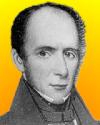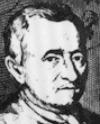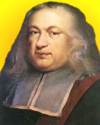
On 12 Jan 1885, John Bloomfield Jervis died, an American civil engineer who became the nation's leading consulting engineer of his time. In the period (1830-60) before the Civil War, he worked on several significant canal projects, railroads and water-supply systems. In his era, the development of infrastructure was extremely important to industrial growth in America. Jervis began in his early twenties on the construction of the Erie Canal, and quickly progressed from axman, to rodman and Resident Engineer at age about 25. By the time he died, at age 89, he had many great engineering achievements, which you can read in John Bloomfield Jervis, his obituary in the Proceedings of the American Society of Civil Engineers (1885)

On 12 Jan 1907, Sergey Korolev was born, Soviet designer of guided missiles, rockets and spacecraft. In 1933, he particpated in the lauch of the first Soviet rocket. Thereafter, he directed the design, construction, testing and launch of most of the Soviet's space projects. Around 1958, he promoted the idea of manned space flight. Today's book pick is: The First Space Race: Launching the World's First Satellites (Centennial of Flight Series), by Matthew A. Bille, Erika Lishock, which includes a chapter on “The Dream of Sergey Korolev” among other references to his contribution to leading the Soviet Union into space. In addition to outlining the Soviet effort which was once so secret that few even knew it existed, the authors reveal how challenging the first steps into space really were for the American teams. The authors’ focus on the rivalries in the first satellite race makes a compelling read.
It is available from Amazon, typically about New from $4.85. Used from $3.24. (As of earlier time of writing - subject to change.)
 | I call this Spirit, unknown hitherto, by the new name of Gas, which can neither be constrained by Vessels, nor reduced into a visible body, unless the feed being first extinguished. But Bodies do contain this Spirit, and do sometimes wholly depart into such a Spirit, not indeed, because it is actually in those very bodies (for truly it could not be detained, yea the whole composed body should I lie away at once) but it is a Spirit grown together, coagulated after the manner of a body, and is stirred up by an attained ferment, as in Wine, the juyce of unripe Grapes, bread, hydromel or water and Honey. |
 | The operating management, providing as it does for the care of near thirty thousand miles of railway, is far more important than that for construction in which there is comparatively little doing. |
 | [Et peut-être la posterité me saura gré de lui avoir fait connaître que les Anciens n’ont pas tout su.] And perhaps, posterity will thank me for having shown that the ancients did not know everything. |
| Before you look at today's web page, see if you can answer some of these questions about the events that happened on this day. Some of the names are very familiar. Others will likely stump you. Tickle your curiosity with these questions, then check your answers on today's web page. | |
| Births | |
 | On 12 Jan 1916, Ruth Benerito was born. She was an American chemist whose pioneering research produced a major development for fabrics made by the textile industry. The result is known by an every-day term. What was the development this scientist gave to the textiles now in everyday use? |
 | On 12 Jan 1580, Jan Baptista van Helmont was born, who recognized the existence of discrete gases. He determined that the gas given off by burning charcoal is the same as that given off by fermenting grape juice. He called it spiritus silvestre (“wild spirit”). By what name is this "wild spirit" gas now known? |
| Deaths | |
 | Pierre Fermat (1601-1665) was a French mathematician who died leaving an enigmatic reference to his solution of a theorem, but without the full explanation. For centuries, others attempted to recreate a proof to his simply written extension to the Pythagorean theorem. What was Fermat's extension to the Pythagorean theorem? |
 | John Bloomfield Jervis (1795-1885), was the American civil engineer who designed the first locomotive to run in America. He had it built in Britain to run on the railroad he incorporated into the Delaware and Hudson Canal project, at a time there were no railroads in America. What was the name of the first American railroad locomotive that Jervis designed? |
| Events | |
 | On 12 Jan in different years, various patents were issued to the same American inventor. These included: “Electrode for Telephone-Transmitters” (1886), “Waterproofing Paint for Portland Cement Buildings” (1909), and “Method and Means for Improving the Rendition of Musical Compositions” (1919). Which inventor held these patents? |
 | On 12 Jan 1908, a wireless message was sent long-distance for the first time from a European structure selected for this purpose because of its height. What was this structure? |
Fast answers for the previous newsletter for January 11: decade including the year 1934 • fruit fly • cosmic rays • CERN • cigarette smoking linked to lung cancer • Titania • decade including the year 1922.
 If you enjoy this newsletter, the website, or wish to offer encouragement or ideas, please send feedback by using your mail reader Reply button.
If you enjoy this newsletter, the website, or wish to offer encouragement or ideas, please send feedback by using your mail reader Reply button. Your click on a Facebook, StumbleUpon, or other social button on the site webpages is also a welcome sign of appreciation. Thank you for using them.
© This newsletter is copyright 2020 by todayinsci.com. Please respect the Webmaster's wishes and do not put copies online of the Newsletter — or any Today in Science History webpage. (If you already have done so, please remove them. Thank you.) Offline use in education is encouraged such as a printout on a bulletin board, or projected for classroom viewing. Online, descriptive links to our pages are welcomed, as these will provide a reader with the most recent revisions, additions and/or corrections of a webpage. For any other copyright questions, please contact the Webmaster by using your mail reader Reply button.
--
If you do not want to receive any more newsletters, Unsubscribe
To update your preferences and to unsubscribe visit this link
Executive Real Estate Business Class
-
"It was like a man with wings. It wasn't like anything you'd see on TV or in a monster movie." ...
About the publisher
Search This Blog
Blog Archive
-
▼
2021
(585)
-
▼
January
(109)
- Ian Kershaw on why Hitler declared war on America
- On This Day for January 31 - Guy Fawkes executed i...
- Newsletter for Sunday 31 January.
- January 31: Slavery Abolished in the USA, Guy Fawk...
- On This Day for January 30 - “Great Soul” assassin...
- Newsletter for Saturday 30 January.
- January 30: Oliver Cromwell Ritually Executed, Mah...
- On This Day for January 29 - Iraq, Iran, and North...
- Newsletter for Friday 29 January.
- January 29: Romeo and Juliet, Coca-Cola and the Se...
- 'The Food That Built America' Is Back!
- On This Day for January 28 - Explosion of the spac...
- Newsletter for Thursday 28 January.
- Inside The Still-Mysterious Circumstances Of Heath...
- Demystified: What’s the Difference Between a Presi...
- On This Day for January 27 - Vietnam War ended, Wo...
- Newsletter for Wednesday 27 January.
- January 27: Kaiser Bill is Born, the Siege of Leni...
- You are now unsubscribed
- What The Wild West Actually Looked Like in 48 Reve...
- New Savings! $50 off Family Memberships
- On This Day for January 26 - First European settle...
- Newsletter for Tuesday 26 January.
- January 26: Catholic Counter-Reformation, British ...
- On This Day for January 25 - Claudius affirmed as ...
- Newsletter for Monday 25 January.
- January 25: São Paulo Founded, Charles Wilkes Disc...
- Queen Victoria and Prince Albert's marriage | Wors...
- On This Day for January 24 - Opportunity's Mars la...
- Newsletter for Sunday 24 January.
- January 24: Scouting for Boys, Apple's Macintosh a...
- On This Day for January 23 - Madeleine Albright sw...
- See All That's Interesting Most Popular Articles
- Please Confirm Subscription To Our Newsletter
- The "Alaskan Avenger" Who Attacked Sex Offenders W...
- On This Day for January 22 - Roe v. Wade ruling, L...
- Newsletter for Friday 22 January.
- On This Day for January 21 - First commercial Conc...
- Newsletter for Thursday 21 January.
- Need Context with Your News?
- Demystified: Where Do Honeybees Go in the Winter?
- On This Day for January 20 - Barack Obama sworn in...
- Newsletter for Wednesday 20 January.
- On This Day for January 19 - Rule in India transfe...
- Newsletter for Tuesday 19 January.
- On This Day for January 18 - German Empire establi...
- Newsletter for Monday 18 January.
- January 18: King of Siam Kills the Crown Prince of...
- Queen Victoria and Prince Albert: was their union ...
- On This Day for January 17 - Hawaiian monarchy ove...
- Newsletter for Sunday 17 January.
- January 17: US-Modoc War, the UN Security Council ...
- On This Day for January 16 - Beginning of Persian ...
- Newsletter for Saturday 16 January.
- January 16: Ivan the Terrible, Louis XVI's Death S...
- The Tragedy Of David Reimer, The Boy Forced To Liv...
- On This Day for January 15 - British Museum opened...
- Newsletter for Friday 15 January.
- January 15: Henry VIII and the Church of England, ...
- On This Day for January 14 - Premiere of Giacomo P...
- Newsletter for Thursday 14 January.
- January 14: The Dutch Conquer Malacca, the US Revo...
- Demystified: Why Does Water Freeze from the Top Down?
- On This Day for January 13 - Émile Zola's “J'accus...
- Newsletter for Wednesday 13 January.
- January 13: 1st Issue of "The Times" of London, Ch...
- On This Day for January 12 - Haiti severely damage...
- Newsletter for Tuesday 12 January.
- January 12: A Day of Coronation, Gandhi's Last Fas...
- On This Day for January 11 - Amelia Earhart's Hawa...
- Newsletter for Monday 11 January.
- January 11: Spices, Morse Code, Insulin and 55 Yea...
- The real history behind Bridgerton
- On This Day for January 10 - Common Sense publishe...
- Newsletter for Sunday 10 January.
- January 10: Thomas Paine Publishes Common Sense, T...
- On This Day for January 9 - Election of Mahmoud Ab...
- THE IGBO LANDING - HOW THEY COMMITTED SUICIDE
- Newsletter for Saturday 9 January.
- January 9: Joan of Arc's Trial, the Daguerreotype ...
- The Biggest Historical Discoveries From 2020 And M...
- On This Day for January 8 - Anniversary of Grimald...
- Newsletter for Friday 8 January.
- January 8: US National Debt Briefly Hits $0, Forma...
- On This Day for January 7 - Galileo's discovery of...
- Newsletter for Thursday 7 January.
- January 7: A Day of Invention - The Typewriter, Hy...
- On This Day for January 6 - Epiphany, Richard II i...
- Newsletter for Wednesday 6 January.
- January 6: Charles I put on Trial for Treason, FDR...
- Meet The Real-Life Goodfellas Whose True Stories W...
- On This Day for January 5 - Golden Gate Bridge con...
- Newsletter for Tuesday 5 January.
- January 5: Richmond Burns, The Nazi Party Forms, A...
- Last Call for 30% off Memberships
- On This Day for January 4 - Burma granted independ...
- Newsletter for Monday 4 January.
- January 4: The Colt Revolver, a 33 Year Strike and...
- Dangers of Victorian London| Roman history quiz | ...
- On This Day for January 3 - Martin Luther excommun...
-
▼
January
(109)
-
Blogroll
-
About
HistoryFact










0 comments:
Post a Comment